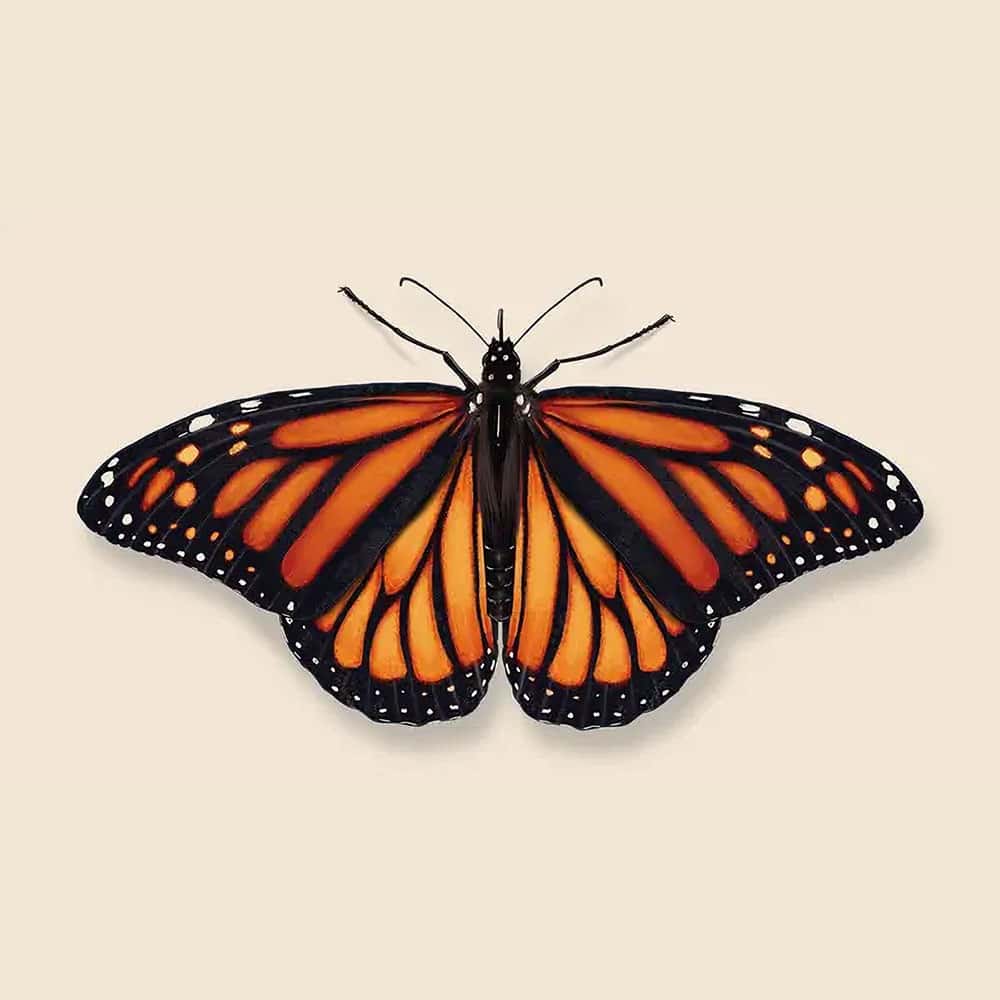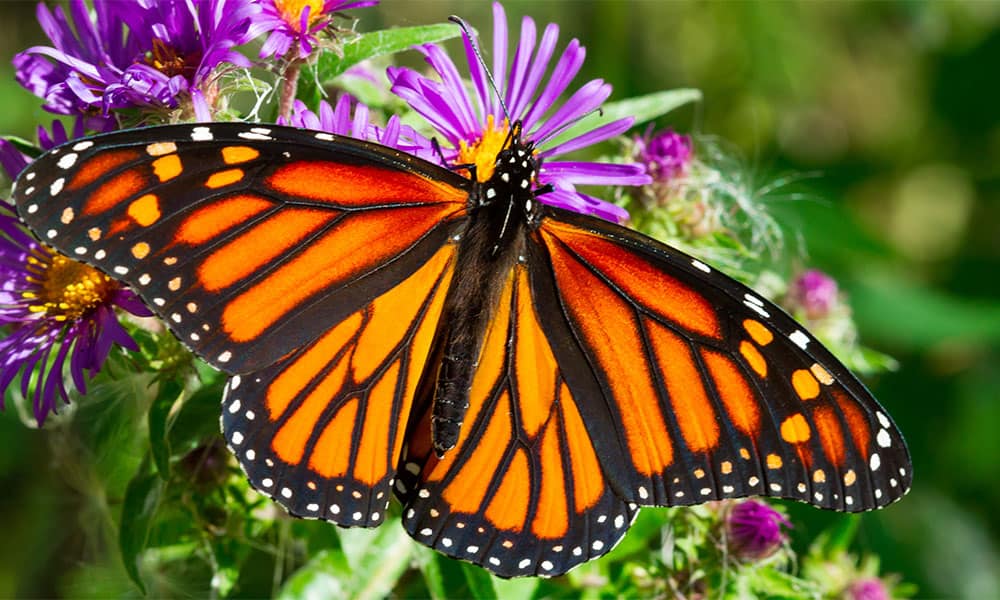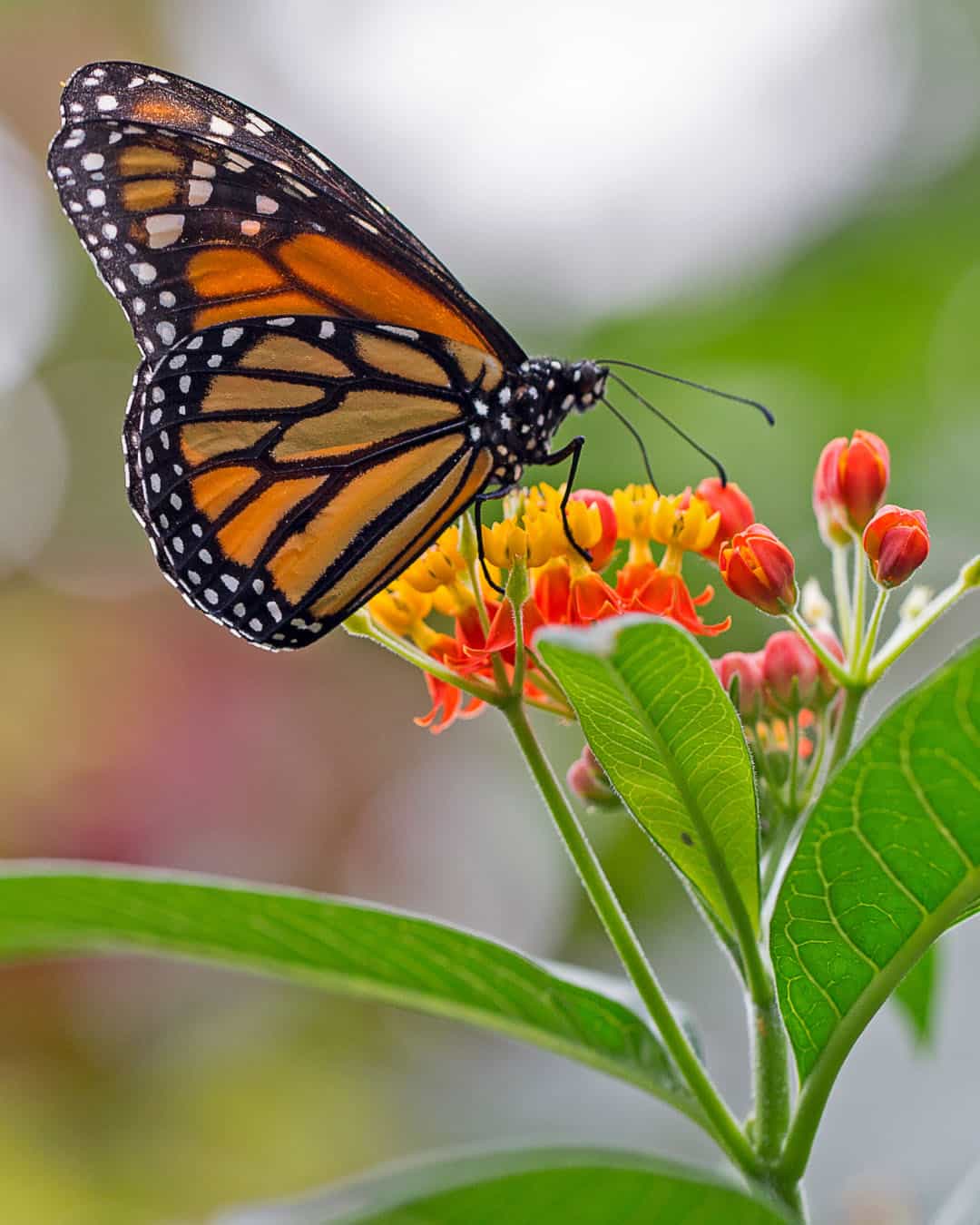Monarch Butterfly Facts & Information
Monarch butterflies, renowned for their striking orange and black wings, are beloved pollinators crucial to the health of ecosystems. However, their populations are declining due to habitat loss, pesticide use, and climate change, making conservation efforts vital.

Danaus Plexippus
What You Need To Know About Monarch Butterflies
What do monarch butterflies look like?
Monarch butterflies are easily recognizable by their striking orange wings with black veins and white spots along the edges. They have a wingspan of about 3.5 to 4 inches. The caterpillars are distinctive as well, with black, white, and yellow stripes running along their bodies.
What do monarch butterflies eat?
As caterpillars, monarchs feed exclusively on milkweed leaves, which contain toxic compounds that make the caterpillars and adult butterflies distasteful to predators. Adult monarch butterflies primarily feed on nectar from a variety of flowers, providing them with the energy needed for their long migrations.
What sort of habitat do monarch butterflies live in?
Monarch butterflies inhabit a range of environments including meadows, fields, gardens, and open areas where milkweed and nectar plants are abundant. During their migrations, they can be found in forests, coastal areas, and other diverse habitats.
How do monarch butterflies commonly behave?
Monarch butterflies are known for their long-distance migration, traveling thousands of miles between their breeding grounds in North America and their wintering sites in Mexico and California. They are solitary flyers and often travel alone, but they converge in large groups at their wintering sites.
Did you know this about monarch butterflies?
Monarch butterflies are famous for their incredible migratory journey, which can cover up to 3,000 miles. Amazingly, it takes multiple generations of monarchs to complete the round trip each year. Another interesting fact is that monarchs use a combination of environmental cues, such as the position of the sun and the earth’s magnetic field, to navigate during their migration.
Understanding Monarch Butterfly Infestations
Understanding Monarch butterfly conservation is essential for ensuring their survival. These butterflies undertake one of the longest migrations of any insect species, traveling thousands of miles from North America to central Mexico. During their lifecycle, Monarchs depend on milkweed plants for laying eggs and as a food source for their larvae. Without adequate milkweed and nectar plants, their populations cannot thrive.While Monarch butterflies do not pose direct health risks to humans, their decline can negatively impact biodiversity and the health of ecosystems.Monarchs are important pollinators for various wildflowers and contribute to the overall health of ecosystems. Their decline signals broader environmental issues.Monarchs are unique for their long-distance migration and reliance on specific habitats, making them indicators of environmental health.

How Hearts Handles Monarch Butterfly Treatment
Hearts Pest Management is committed to promoting Monarch butterfly conservation through eco-friendly practices and habitat restoration efforts. Our approach includes reducing the use of harmful pesticides and educating clients on the importance of supporting pollinator populations.
Monarch Butterfly Inspection
Monarch Butterfly Treatment
Monarch Butterfly Prevention
Educational Resources

Think You Might Have a Monarch Butterfly Infestation?
At Hearts Pest Control, we understand the challenges associated with Monarch Butterfly infestations and are here to provide professional solutions tailored to your needs. Flourishing in warm and humid climates, they are prevalent in many regions, including San Diego County, Orange County, and Los Angeles County.